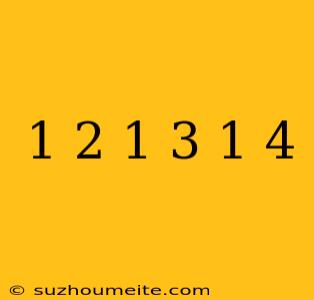Understand Fractions: 1/2, 1/3, 1/4
Fractions are a fundamental concept in mathematics, and understanding them is crucial for various mathematical operations. In this article, we will explore three common fractions: 1/2, 1/3, and 1/4.
What is a Fraction?
A fraction represents a part of a whole. It consists of a numerator (the top number) and a denominator (the bottom number). The numerator tells us how many equal parts we have, and the denominator tells us how many parts the whole is divided into.
1/2 (One-Half)
The fraction 1/2 represents one out of two equal parts. Imagine a pizza divided into two slices. If you eat one slice, you have consumed 1/2 of the pizza.
Properties of 1/2
- Equivalent fractions: 2/4, 3/6, 4/8, ...
- Decimal equivalent: 0.5
- Percentage equivalent: 50%
1/3 (One-Third)
The fraction 1/3 represents one out of three equal parts. Imagine a cake divided into three slices. If you eat one slice, you have consumed 1/3 of the cake.
Properties of 1/3
- Equivalent fractions: 2/6, 3/9, 4/12, ...
- Decimal equivalent: 0.33...
- Percentage equivalent: 33.33%
1/4 (One-Quarter)
The fraction 1/4 represents one out of four equal parts. Imagine a toy divided into four parts. If you have one part, you have 1/4 of the toy.
Properties of 1/4
- Equivalent fractions: 2/8, 3/12, 4/16, ...
- Decimal equivalent: 0.25
- Percentage equivalent: 25%
Real-World Applications
Fractions are used in various real-world scenarios, such as:
- Cooking: Recipes often require fractional amounts of ingredients.
- Measurement: Fractions are used to express lengths, areas, and volumes.
- Finance: Fractions are used to calculate interest rates, investments, and discounts.
Conclusion
In conclusion, understanding fractions such as 1/2, 1/3, and 1/4 is essential for mathematical operations and real-world applications. By recognizing equivalent fractions, decimal and percentage equivalents, and real-world applications, you can become proficient in working with fractions.
